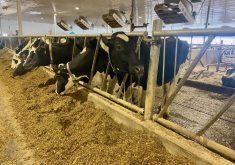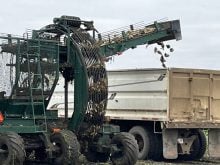SCEPTRE, Sask. – Doreen Seaman plopped a bright pink hat on her head.
She could have chosen a purple velvet one with netting, a black cloche or even one of several brunette wigs, all lined up on the top shelf of one of the many walls and rooms in Seaman’s business called Scavengers.
Located in the small southwestern Saskatchewan town on the edge of the Sand Hills, Scavengers draws buyers looking for good deals in secondhand household goods and clothes. Others come in search of an outing followed by coffee and pie in the restaurant.
Read Also

Accurate accounting, inventory records are important
Maintaining detailed accounting and inventory records is not just a best practice; it’s a critical component of financial health, operational efficiency and compliance with programs like AgriStability.
The 1,700 sq. metre store – the size of a modest dairy barn – in a former machinery repair shop allows plenty of room for poking around.
There is a children’s room with stuffed animals, toys and clothes and a large room for adult clothes and shoes. Other rooms contain books, 923 videos to rent, kitchen goods, appliances for work and entertainment, and garden items.
When Seaman moved to the Sceptre area with her husband, Lloyd, in 1998 so he could work the family farm, she looked around for an activity. The 75-year-old boarded-up building on the town’s railway street caught her eye.
The Seamans bought it and six other adjoining lots for $1 on Oct. 1, 2001.
Then the work began.
Ninety loads of garbage had to be removed from the building before they could see the mess they had. The roof needed to be patched, the floor had fallen in spots and the concrete was rotted. There were 500 shelves throughout the building, some of which were holding up the ceiling. The old mechanic’s pit needed to be covered over and the dim interior called out for windows.
It took three months of effort, but the building opened as Scavenger’s on Jan. 5, 2002.
In between, the building was rewired. Seaman said Sask Power only agreed to that because the previous owner had kept the power running to a freezer.
The building was cleaned and washed, shelves painted and restored to their places and wooden flooring and carpet laid down. Nine windows were repaired or added, as was a set of patio doors off the dining room that led to the children’s playground and firepit picnic area. Light now streams into the building from every direction.
Seaman said that other than the new washrooms, all the materials were scavenged, even the nails, screws and paint.
Some of the building’s original parts remain, such as the single pane picture windows lining the front entrance that look upon the twice-a-week trains and the prairie beyond.
“The last hailstorm in June, the windows were bouncing,” Seaman said.
“I said, ‘Oh Lord, save my windows.’ “
She keeps a jar beside the cash register that collects money for her roofing fund. She hopes to replace the shingles with tin roofing from another old building in the district.
Seaman doesn’t buy any of the items sold in her store. They are either sold 50-50 on consignment or donated from estate sales or people’s garage cleaning efforts. Even the building’s new furnace was traded for something else.
“It’s all donated items and then I sell it and it’s my money.”
The Seamans use a 5.5 m trailer to pick up donations from district residents who can’t bring them to their back door drop-off bin. Besides the spacious quarters for her items, Seaman said customers come because she keeps the store clean and washes all the goods before putting them on a shelf.
“I’m a cleaning fanatic. There’s no smell.”
This is not the first time she has undertaken such a project. It is her seventh renovation, including previous houses and a hotel they once owned.
“Your only limitation is your imagination,” she said in recounting painting the building exterior in stripes of whatever colour she had scrounged, mainly pink, blue and red.
Scavengers is open six days a week and is Seaman’s full-time job. During the past two summers she has received help from a local 10-year-old boy, but most days she runs it on her own.
And running is the word for this energetic woman who, listening to her piped-in polka music, dances over to greet a pair of customers who are visiting from British Columbia. The tour is over and the sales begin.














